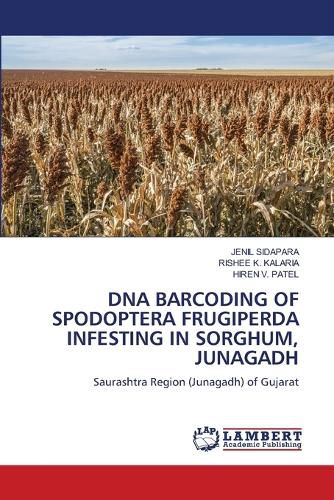Readings Newsletter
Become a Readings Member to make your shopping experience even easier.
Sign in or sign up for free!
You’re not far away from qualifying for FREE standard shipping within Australia
You’ve qualified for FREE standard shipping within Australia
The cart is loading…






This title is printed to order. This book may have been self-published. If so, we cannot guarantee the quality of the content. In the main most books will have gone through the editing process however some may not. We therefore suggest that you be aware of this before ordering this book. If in doubt check either the author or publisher’s details as we are unable to accept any returns unless they are faulty. Please contact us if you have any questions.
In conclusion, DNA barcoding of Spodoptera frugiperda in sorghum crops provides a highly effective and precise method for the identification and monitoring of this destructive pest. By targeting the cytochrome c oxidase I (COI) gene, DNA barcoding enables the accurate differentiation of S. frugiperda from other similar species, even in the absence of distinguishing morphological features. This technique enhances early pest detection, supports effective surveillance, and aids in the development of targeted pest management strategies, including the use of biocontrol agents or resistant crop varieties.Moreover, DNA barcoding contributes to a deeper understanding of the genetic diversity and spread of S. frugiperda populations, which can inform strategies for managing resistance to insecticides and predicting pest behavior. Ultimately, the use of DNA barcoding in agricultural pest management strengthens crop protection, reduces reliance on broad-spectrum pesticides, and supports sustainable farming practices, helping to mitigate the impact of S. frugiperda on sorghum and other crops.
$9.00 standard shipping within Australia
FREE standard shipping within Australia for orders over $100.00
Express & International shipping calculated at checkout
Stock availability can be subject to change without notice. We recommend calling the shop or contacting our online team to check availability of low stock items. Please see our Shopping Online page for more details.
This title is printed to order. This book may have been self-published. If so, we cannot guarantee the quality of the content. In the main most books will have gone through the editing process however some may not. We therefore suggest that you be aware of this before ordering this book. If in doubt check either the author or publisher’s details as we are unable to accept any returns unless they are faulty. Please contact us if you have any questions.
In conclusion, DNA barcoding of Spodoptera frugiperda in sorghum crops provides a highly effective and precise method for the identification and monitoring of this destructive pest. By targeting the cytochrome c oxidase I (COI) gene, DNA barcoding enables the accurate differentiation of S. frugiperda from other similar species, even in the absence of distinguishing morphological features. This technique enhances early pest detection, supports effective surveillance, and aids in the development of targeted pest management strategies, including the use of biocontrol agents or resistant crop varieties.Moreover, DNA barcoding contributes to a deeper understanding of the genetic diversity and spread of S. frugiperda populations, which can inform strategies for managing resistance to insecticides and predicting pest behavior. Ultimately, the use of DNA barcoding in agricultural pest management strengthens crop protection, reduces reliance on broad-spectrum pesticides, and supports sustainable farming practices, helping to mitigate the impact of S. frugiperda on sorghum and other crops.